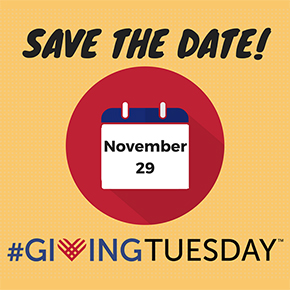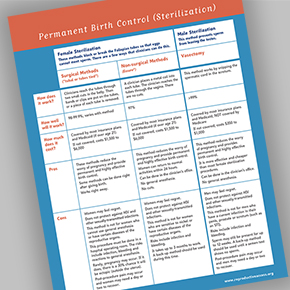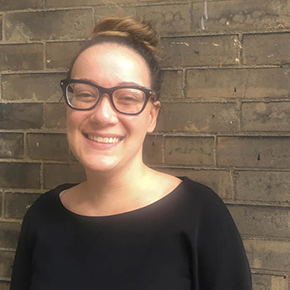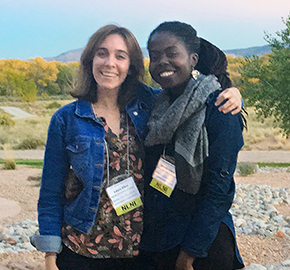Mar 20

You can Support Project Access today!
Newsletter/November 2016
 This year, the Reproductive Health Access Project (RHAP) is proud to be participating in the fifth annual #GivingTuesday! #GivingTuesday is a campaign to create a national day of giving at the start of the holiday season. It celebrates and encourages charitable activities that support nonprofit organizations like ours. #GivingTuesday takes place on November 29th, the Tuesday right after Thanksgiving and is in many ways an antidote to Black Friday and Cyber Monday.
This year, the Reproductive Health Access Project (RHAP) is proud to be participating in the fifth annual #GivingTuesday! #GivingTuesday is a campaign to create a national day of giving at the start of the holiday season. It celebrates and encourages charitable activities that support nonprofit organizations like ours. #GivingTuesday takes place on November 29th, the Tuesday right after Thanksgiving and is in many ways an antidote to Black Friday and Cyber Monday.
All gifts to us on #GivingTuesday will directly support our on-the-ground work to expand access to reproductive health care. Having access to reproductive health care means getting the health care you need, creating the family you want if and when you want it, and being in control of your body. A donation to the Reproductive Health Access Project ensures that we can continue to train and support clinicians to make reproductive health care accessible to everyone, everywhere in the United States.
This year, a generous donor has agreed to give $2 for every $1 we raise on #GivingTuesday. So, mark your calendars for November 29, 2016 to #GiveAccess by making a donation to RHAP on #GivingTuesday!
 Supporting RHAP has never been easier. When you shop online at Amazon, connect through Amazon Smile at smile.amazon.com, and Amazon will donate a portion of the purchase price to the Reproductive Health Access Project. You’ll find the same low prices, selection, and convenient shopping experience as Amazon.com, with the added bonus of expanding access to reproductive health care!
Supporting RHAP has never been easier. When you shop online at Amazon, connect through Amazon Smile at smile.amazon.com, and Amazon will donate a portion of the purchase price to the Reproductive Health Access Project. You’ll find the same low prices, selection, and convenient shopping experience as Amazon.com, with the added bonus of expanding access to reproductive health care!
To shop using Amazon Smile, follow these 3 easy steps:
This year, enjoy the convenience of online shopping while supporting reproductive health using Amazon Smile.
 November 18th is the fourth annual World Vasectomy Day, dedicated to broadening the conversation about family planning and raising awareness of procedure-based birth control. It’s also a day when many men and trans women can get free counseling on birth control and discounted procedures. A vasectomy is a surgical form of contraception that involves cutting or blocking tubes that transports sperm from the testicles to the penis.
November 18th is the fourth annual World Vasectomy Day, dedicated to broadening the conversation about family planning and raising awareness of procedure-based birth control. It’s also a day when many men and trans women can get free counseling on birth control and discounted procedures. A vasectomy is a surgical form of contraception that involves cutting or blocking tubes that transports sperm from the testicles to the penis.
There are two types of vasectomies. No-scalpel vasectomy uses special small tools to reach the vas tubes by making one small opening in the scrotum without cutting. The “classic” vasectomy makes two larger openings on the scrotum and sometimes needs stitches. The chance of complications (infection and bleeding) is less with the “no-scalpel” technique. The no-scalpel vasectomy is as effective as classic vasectomy for birth control. No needle and no-scalpel vasectomy techniques are the most advanced medical methods available.
Birth control, even in 2016, can still be a taboo subject. A vasectomy takes 10-15 minutes, is extremely safe with a shorter recovery period, and more cost efficient than other methods. Even with all of these attributes, it is still sought after at a much lower rate than permanent sterilization for people with fallopian tubes.
Our cultural upbringing can instill a fear of vasectomies. Myths and stigmas commonly associated with vasectomy include a decrease in one’s masculinity, feeling incomplete, or impairing sexual function. De-stigmatizing vasectomies is necessary for conversations to be inclusive of race, all genders, and socio-economic status when considering birth control methods and healthier sex lifestyles.
For more information, check out our free patient education fact sheet available on our website.
 In October we welcomed Rosanna Montilla-Payano, RHAP’s Development Officer, as the newest member of the RHAP team. Rosanna’s passion for social justice, in particular issues of health care, education, women’s rights, and philanthropy make her an excellent match for our growing organization. Prior to joining the Reproductive Health Access Project, Rosanna worked as a Development Associate for Care for the Homeless, a large network of community health centers dedicated to serving New York City’s homeless population, and as a fundraiser at Queens College. She grew up in New York City and received her Bachelor of Arts in Anthropology from the University of Massachusetts Amherst. Interested in volunteering or finding out how you can support our work? Reach out to Rosanna at rosanna@reproductiveaccess.org.
In October we welcomed Rosanna Montilla-Payano, RHAP’s Development Officer, as the newest member of the RHAP team. Rosanna’s passion for social justice, in particular issues of health care, education, women’s rights, and philanthropy make her an excellent match for our growing organization. Prior to joining the Reproductive Health Access Project, Rosanna worked as a Development Associate for Care for the Homeless, a large network of community health centers dedicated to serving New York City’s homeless population, and as a fundraiser at Queens College. She grew up in New York City and received her Bachelor of Arts in Anthropology from the University of Massachusetts Amherst. Interested in volunteering or finding out how you can support our work? Reach out to Rosanna at rosanna@reproductiveaccess.org.
Laura Riker, RHAP Program Manager
 Naomi (RHAP’s Operations Associate) and I were able to attend the New Leadership Network Initiative (NLNI), a project of CLPP, a reproductive-justice focused organization. Reproductive justice holds that everyone should have the social, political, and economic power and resources to make their own decisions about their gender, bodies, and sexuality for themselves, their families, and their communities. Using a reproductive justice framework means lifting up the voices of individuals and communities who are most impacted by reproductive oppression. NLNI provides space for learning, training, and collaboration between emerging leaders in the reproductive justice movement.
Naomi (RHAP’s Operations Associate) and I were able to attend the New Leadership Network Initiative (NLNI), a project of CLPP, a reproductive-justice focused organization. Reproductive justice holds that everyone should have the social, political, and economic power and resources to make their own decisions about their gender, bodies, and sexuality for themselves, their families, and their communities. Using a reproductive justice framework means lifting up the voices of individuals and communities who are most impacted by reproductive oppression. NLNI provides space for learning, training, and collaboration between emerging leaders in the reproductive justice movement.
This fall’s meeting was in beautiful Bernalillo, New Mexico. We opened with a water blessing, where folks brought water from their hometowns and shared what water means to them. The next day we attended several workshops, starting with a panel on expanding and de-stigmatizing reproductive health in New Mexico hosted by the ACLU New Mexico and Young Women United. Unlike surrounding states, New Mexico does not have any TRAP (targeted regulation of abortion providers) laws or major abortion restrictions such as waiting periods and parental consent, and Medicaid will cover abortion. This is thanks to the tireless work of activists and advocates who have successfully fought to keep abortion accessible. Unfortunately, just as threats towards reproductive health access have grown nationally, they have also increased in New Mexico. As such, organizers on the ground continue to fight these threats by lifting up the voices of communities most affected by restrictive and harmful laws.
The Sadie Nash Leadership Project and KIMBRITIVE led a workshop during which we used reproductive justice principles to develop prototypes of tools (such as social media campaigns and mixed-media projects) that can be used to engage young people in the reproductive justice movement. This hands-on workshop really encouraged me to think creatively about how we can build leadership and develop advocates in non-traditional ways. Later that day, I participated in a conversation led by a representative from the Prison Birth Project on using the needs of our movement to fundraise in ways that hold true to social justice principles and think beyond the non-profit industrial complex.
On Saturday, we had the unique opportunity to attend the Gathering for Mother Earth, organized by Tewa Women United, a Native Woman-led community based organization that addresses the challenges of reproductive health and justice for Indigenous women. We participated in a talking circle about the intersections between reproductive and environmental justice – an issue that I don’t think about in my everyday life in New York City but that is so critical to the reproductive health and wellness of communities.
The weekend was a great opportunity for us to network with organizations within the reproductive justice movement and beyond. The incredible folks that I met at NLNI helped me broaden my own personal understanding of the intersections between reproductive justice and other social justice movements, and gave me a lot of food for thought for the work that RHAP can do as an organization to incorporate more reproductive justice elements into our programs.
Your gift allows us to train and support health care providers across the United States so they can offer patients compassionate and comprehensive care.
Mar 20
